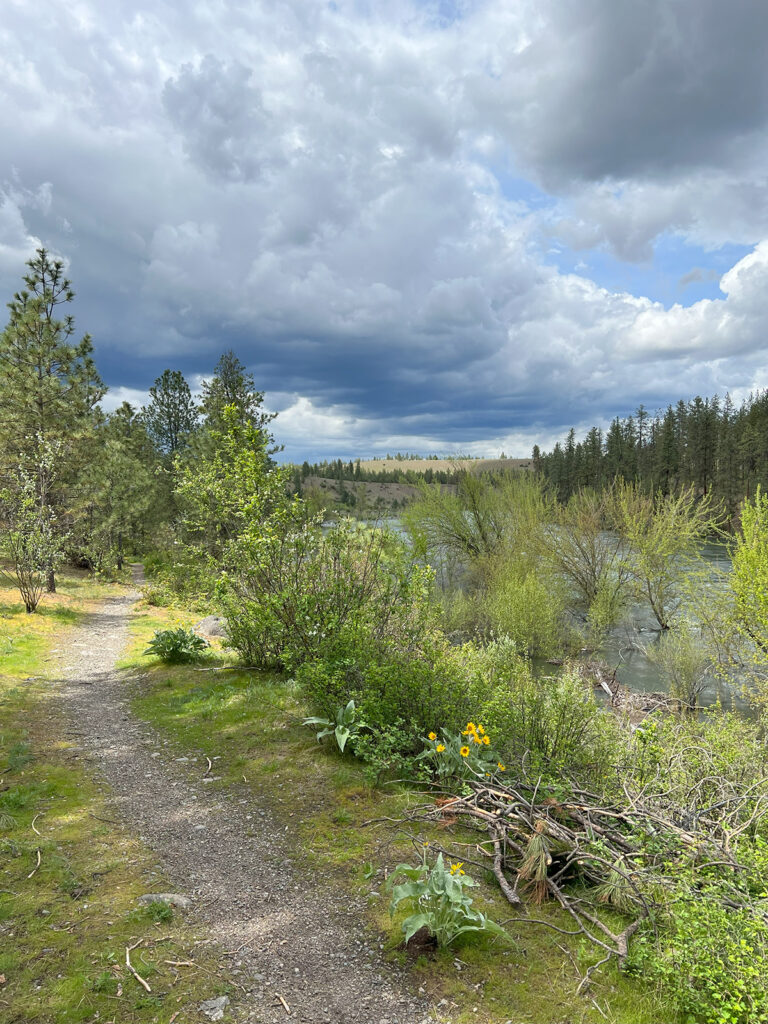Cover photo courtesy of Lisa Laughlin
I didn’t recreate as a kid, per se, but I did spend a lot of time outside looking at things. I was in central Washington, where the sky took precedence in the swallowing, expansive way it does in a high desert. As I wandered, I learned weather signs. Tiger-striped clouds meant wind. Tall clouds held the energy of rain. There are scientific names for those clouds, but I learned their form through observation. It settled deeper in my bones than Latin.
Noticing the weather has an obvious benefit, especially during spring in the Inland Northwest, when we receive more than one type of weather in a day (or an hour). Studying the weather can also be a life-saving skill in the backcountry, as Karie Lee Knoke writes in her Primal Skills column in this issue. I still remember the first mountain squall that caught me off-guard in late spring, how I’d noticed the color in the clouds but didn’t understand the incredible speed and aggression with which mountain clouds could tumble over a pass. Luckily, my group had just packed camp and we hiked out as a freezing snow/hail mix pelted us.
Beyond knowing when to carry a raincoat, reading the weather can prime you for a skill we all could work to sharpen: the skill of noticing. When we seek less noisy environments for an escape (the trails, lakes and mountains we’re so fond of), we’re often still absorbed in the recreation—a pace, a path, our gear or taking photos. I am not immune to this. But when I do notice things outside of myself, I remember it’s a discipline worth practicing.

When you set out on a ride or walk, there’s a lot of good and bad to observe. Wildflowers and neglected dog poop. Spring rain and microplastics. The way the sun glints off a piece of trash in a field. There’s a certain amount of negative capability we all maintain—we can hold two conflicting ideas or images at once without going insane—but responsible recreation includes noticing the friction.
Sometimes (maybe often) it takes others to help us notice. While working on this issue, I received an email from someone about a section of natural land that was up for sale in an area with high pressure for development. It took me by surprise, not only because I’ve worked for this magazine and considered myself familiar with local trails, but because the area was less than one mile from my home. I’d noticed the nearby prairie springing apartment complexes rather than lupine, but I didn’t know about this land that might benefit from community action. Which is why noticing is a never-ending task. The places we live and recreate, no matter how well-protected, remain opportunities to define sustainable recreation, prioritize wildlife and work for cleaner water.
So, this spring, look at the clouds—and look at your local rivers, conservation areas, and bike lanes. Take a walk in an urban natural area (we list four worth checking out in our feature on page 26). Consider the wildlife there. Research local land disputes and share your voice. Sign up for a river clean up. Get to know a Washington State Park on an upcoming fee-free day (March 9, March 19, or April 22). Go micro, or macro, by looking at the geology in our region—a physical record of history, decay, evolution and our role in it—with our feature on page 50. Look closely, because the places we recreate are changing as fast as the climate, and they’re going to require people who notice to save them.
- Lisa Laughlin, Managing Editor













